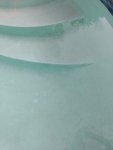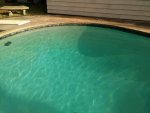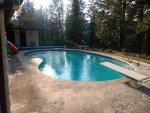- May 23, 2015
- 25,693
- Pool Size
- 16000
- Surface
- Plaster
- Chlorine
- Salt Water Generator
- SWG Type
- Pentair Intellichlor IC-60
Granular activated carbon (GAC) removes both FC and CC. My whole house softener is a dual tank system where the water first flows through a GAC tank to remove lots of impurities and chlorine and then through the exchange resin to remove Ca/Mg hardness. By using the GAC prefilter, the reduced chlorine load saves the life of the resin. I periodically check FC/CC/CH/TH out of my softener tap to ensure that the resin beds are functioning.
An iron removal system is a lot more expensive as you have found out. It can become very cost-prohibitive when iron levels are as high as yours....now you know why municipal suppliers and the EPA don’t classify iron as a contaminant!! If the EPA did, then suppliers would have to treat for it and the cost of water would soar. Iron...it’s a nutrient every human needs to live...therefore it can’t be a contaminant.....(too bad most dissolved iron in drinking water is nearly impossible for the human body to absorb )
)
An iron removal system is a lot more expensive as you have found out. It can become very cost-prohibitive when iron levels are as high as yours....now you know why municipal suppliers and the EPA don’t classify iron as a contaminant!! If the EPA did, then suppliers would have to treat for it and the cost of water would soar. Iron...it’s a nutrient every human needs to live...therefore it can’t be a contaminant.....(too bad most dissolved iron in drinking water is nearly impossible for the human body to absorb







